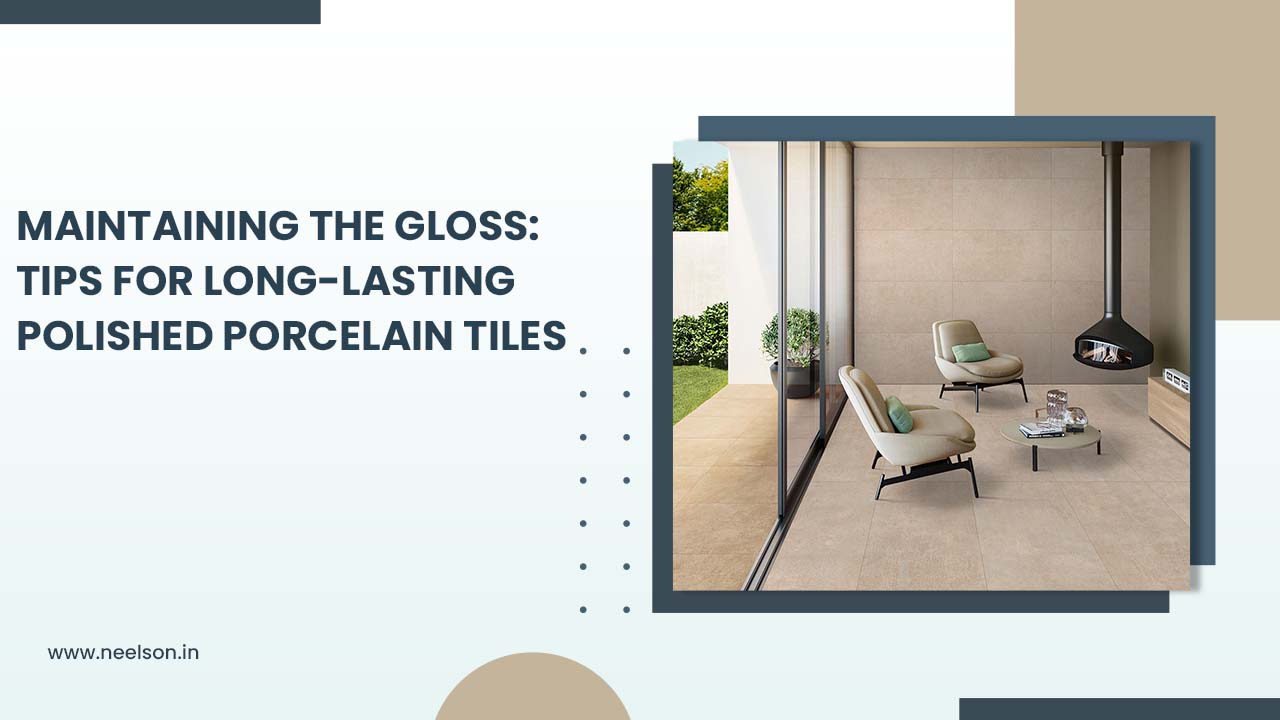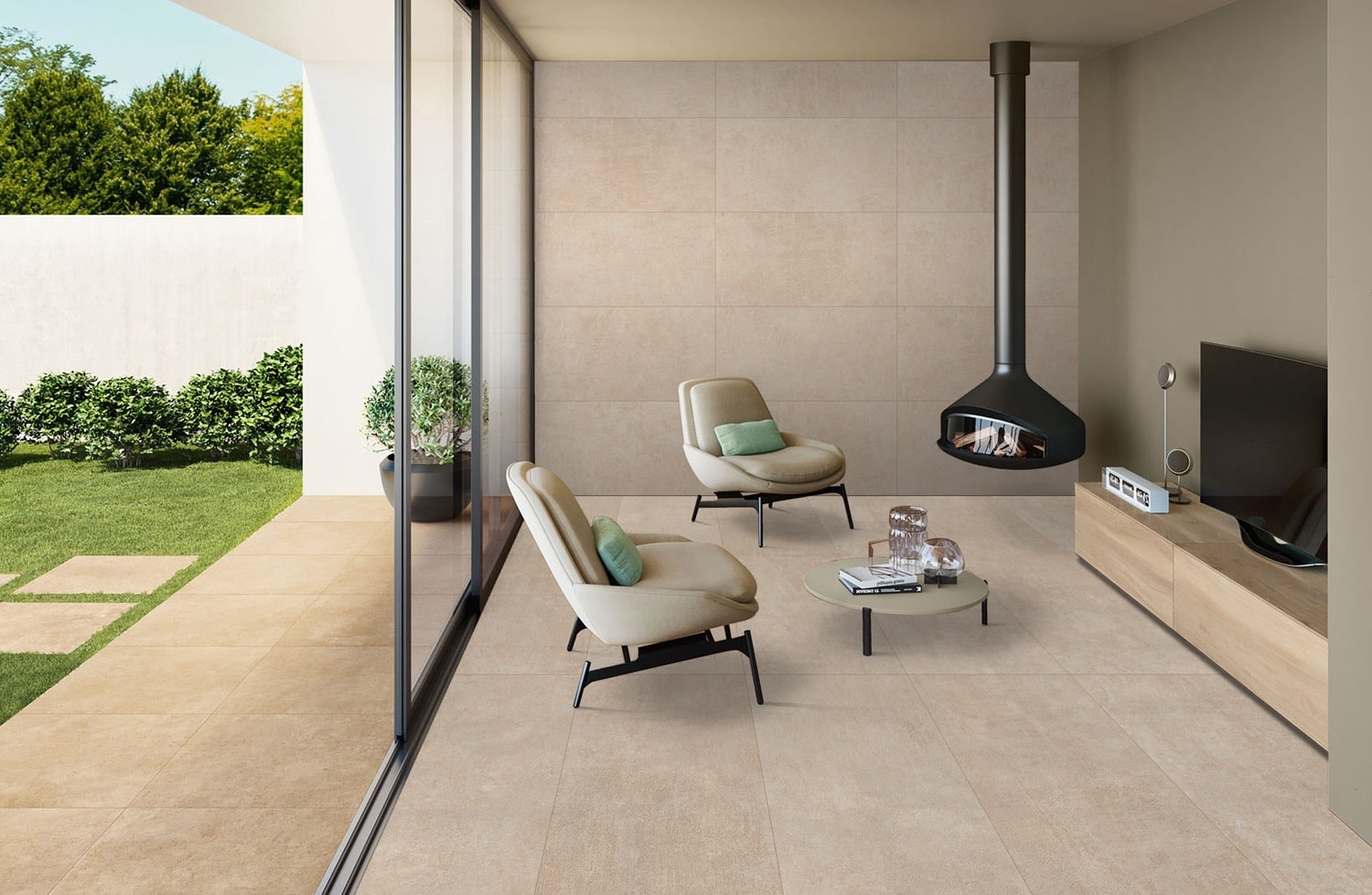
Considering its low maintenance, longevity, and elegant appearance, polished porcelain tiles are a favorite choice of today’s customers. However, appropriate care and upkeep are necessary to keep these tiles appearing perfect and preserve their glossy finish over time. In this extensive guide, we'll look at practical ways to maintain the luster and durability of your polished porcelain tiles. As a leading polished porcelain tiles manufacturer for over a decade, we have advised our thousands of customers to follow the below best practices for maintaining the look and grace of polished porcelain tiles. So, let us get started.
What Are Polished Porcelain Tiles?
Refined clay is fired at high temperatures to create porcelain tiles and produce a dense and long-lasting substance. The polished type undergoes an additional polishing procedure to acquire a high-gloss finish and improve its visual attractiveness. Even though ceramic tiles are less porous than other flooring options, improper maintenance can still cause scratches, stains, and a loss of sheen.
Various Routine Cleaning Practices
- Frequent vacuuming or sweeping: Debris and dirt can cause scratches on polished surfaces by acting as abrasives. Use a soft-bristle broom or a vacuum with the appropriate attachment to sweep or vacuum your tiles daily to avoid this.
- Damp Mopping: After removing loose dirt, mop the floor with warm water and a gentle, pH-neutral cleaner. Avoid using harsh chemicals, as they can harm the tile's surface. To avoid water stains, ensure the mop is moist, not completely wet.
- Immediate Spill Management: Spills should be cleaned up immediately to avoid discoloration. Use a gentle towel to mop up spills, and if necessary, use a light detergent to clean the area.
Deep Cleaning Techniques
For a deeper clean, particularly in places with lots of traffic or when tiles seem lifeless:
- Use of Vinegar Solution: To clean and restore gloss, use a solution of equal parts white vinegar and warm water. After mopping the floor with this combination, rinse it with fresh water to remove any leftover residue.
- Steam Cleaning: Tiles can be cleaned and sanitized without using chemicals with steam mops. Ensure the steam mop is appropriate for polished porcelain and adheres to the manufacturer's guidelines.

Preventive Measures
- Use of Doormats: Place doormats at doorways to lessen the quantity of grit and filth tracked onto the tiles. This easy step can significantly reduce surface scratches.
- Furniture Pads: Attach felt pads to the legs of furniture to avoid scratches when moving it. Check these pads frequently and replace them as necessary.
- Avoid Harsh Chemicals: Avoid using cleaners that contain acids, bleach, or ammonia, as these can etch the tile surface and dull its shine.
Maintenance of Grouts
In addition to improving the overall look, clean grout lines also stop the growth of mold and mildew:
- For routine cleaning, make a paste using water and baking soda. Apply it to the grout lines, scrub gently with a soft brush, and rinse well.
- Sealing: Apply a grout sealer once a year to guard against moisture and stains. Make sure the sealant works with the type of grout you have.
Address Stubborn Stains and Scratches
- Removal of Stains: To remove stubborn stains, apply a poultice of baking soda and water. Before washing, apply the paste to the stain, cover it with plastic wrap, and leave it overnight.
- Scratch Repair: A specialist porcelain polishing compound can remove minor scratches. However, a professional may be needed for deeper scratches.
Care Tips for Long-Term
- Frequent Polishing: To preserve the tiles' glossy appearance, use a product made especially for polished porcelain to polish them regularly. Observe the manufacturer's instructions to prevent harm.
- Avoid wax—and oil-based cleaners, as they may leave a residue on the tile surface, drawing dirt and reducing its luster.
- Temperature Control: Extreme temperature fluctuations may impact the integrity of porcelain tiles. To avoid such problems, keep the inside temperature constant.
Conclusion
It takes a mix of routine cleaning, preventative care, and sporadic deep cleaning to keep polished porcelain tiles glossy and long-lasting. You can ensure that your tiles continue to be a beautiful accent in your house for many years by adhering to these recommendations.
Visit Neelson Ceramics to learn more about porcelain tiles and upkeep supplies.
